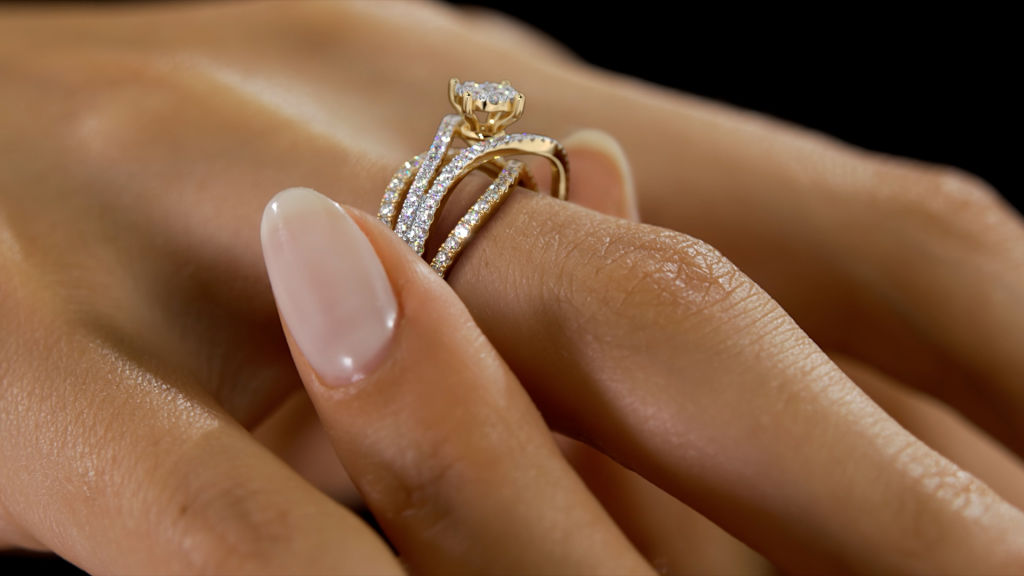Choosing the perfect diamond for a wedding ring is a significant decision, as it symbolizes love and commitment. With various options available, understanding the key factors that determine a diamond’s quality can help you select the best one for your partner. This guide covers essential aspects to consider when choosing a diamond, including the Four Cs, styles, settings, and personal preferences.

Understanding the Four Cs
- Carat Weight
Carat weight measures the size of the diamond. While larger diamonds are often more expensive, the carat weight should align with your budget and your partner’s preferences. Remember that a diamond’s appearance can also be influenced by its cut, so a well-cut smaller diamond can look larger than a poorly cut larger one.
- Cut
The cut refers to how well a diamond has been shaped and faceted. This aspect significantly affects the diamond’s brilliance and sparkle. Diamonds are graded on a scale from Excellent to Poor, with Excellent cut diamonds reflecting the most light. When selecting a diamond, prioritize the cut, as it has a profound impact on the overall appearance of the ring.
- Color
Diamonds come in a range of colors, from colorless to shades of yellow or brown. The Gemological Institute of America (GIA) grades diamonds on a scale from D (colorless) to Z (light yellow). For wedding rings, most people prefer colorless or near-colorless diamonds, as they appear more radiant and elegant. However, if your partner has a specific preference for colored diamonds, consider that as well.
- Clarity
Clarity measures the presence of internal or external imperfections, known as inclusions and blemishes. The GIA grades clarity from Flawless (no inclusions visible under 10x magnification) to Included (inclusions visible to the naked eye). For most people, a clarity grade of VS1 or VS2 offers a good balance of quality and value, as these diamonds have minor inclusions that are difficult to see without magnification.
Choosing the Right Shape
The shape of the diamond is another crucial consideration. Each shape has its unique appeal and can significantly influence the overall design of the wedding ring. Here are some popular shapes to consider:
- Round
The round diamond is the most popular shape, known for its brilliance and timeless elegance. It works well in various settings and complements different styles.
- Princess
The princess cut is a modern favorite, characterized by its square shape and sharp corners. It offers a contemporary look and is often set in solitaire or halo settings.
- Emerald
The emerald cut diamond a distinctive rectangular shape with step-cut facets, creating a sophisticated, vintage feel. They highlight the clarity of the diamond and are often chosen by those who appreciate a classic style.
- Oval
Oval diamonds have an elongated shape that can create the illusion of greater size. They are a versatile choice, fitting well in various settings and complementing different styles.
- Marquise
The marquise cut features a pointed oval shape and can appear larger due to its elongated design. It is often chosen for unique and extravagant settings.
- Pear
The pear shape combines the features of the round and marquise cuts, resulting in a teardrop appearance. It is a beautiful option for those seeking a distinctive design.
Setting Styles
The setting of the diamond plays a vital role in its overall appearance. Different settings can enhance the diamond’s brilliance and complement the wearer’s personal style. Here are some popular settings to consider:
- Solitaire
A solitaire setting features a single diamond, showcasing its beauty and brilliance. This classic option is timeless and emphasizes the diamond’s size and cut.
- Halo
A halo setting surrounds the center diamond with a ring of smaller diamonds, enhancing its sparkle and making it appear larger. This style offers a glamorous and eye-catching look.
- Three-Stone
The three-stone setting features a larger center diamond flanked by two smaller diamonds, symbolizing the past, present, and future. It’s a meaningful choice that adds visual interest.
- Pavé
In a pavé setting, small diamonds are set closely together to create a shimmering effect along the band. This style adds extra sparkle and elegance to the ring.
- Channel
A channel setting involves diamonds set within the band, creating a smooth and secure appearance. This style is perfect for those who prefer a more understated yet elegant look.
Conclusion
Choosing the best diamond for a wedding ring is a meaningful and personal journey. By understanding the Four Cs, selecting the right shape and setting, considering personal style, and setting a budget, you can make an informed decision that will result in a beautiful symbol of your love and commitment. Remember, the perfect diamond is not just about size or clarity; it’s about finding a ring that resonates with your partner’s personality and preferences. With careful consideration and thoughtful planning, you can select a stunning diamond that will be cherished for a lifetime.


